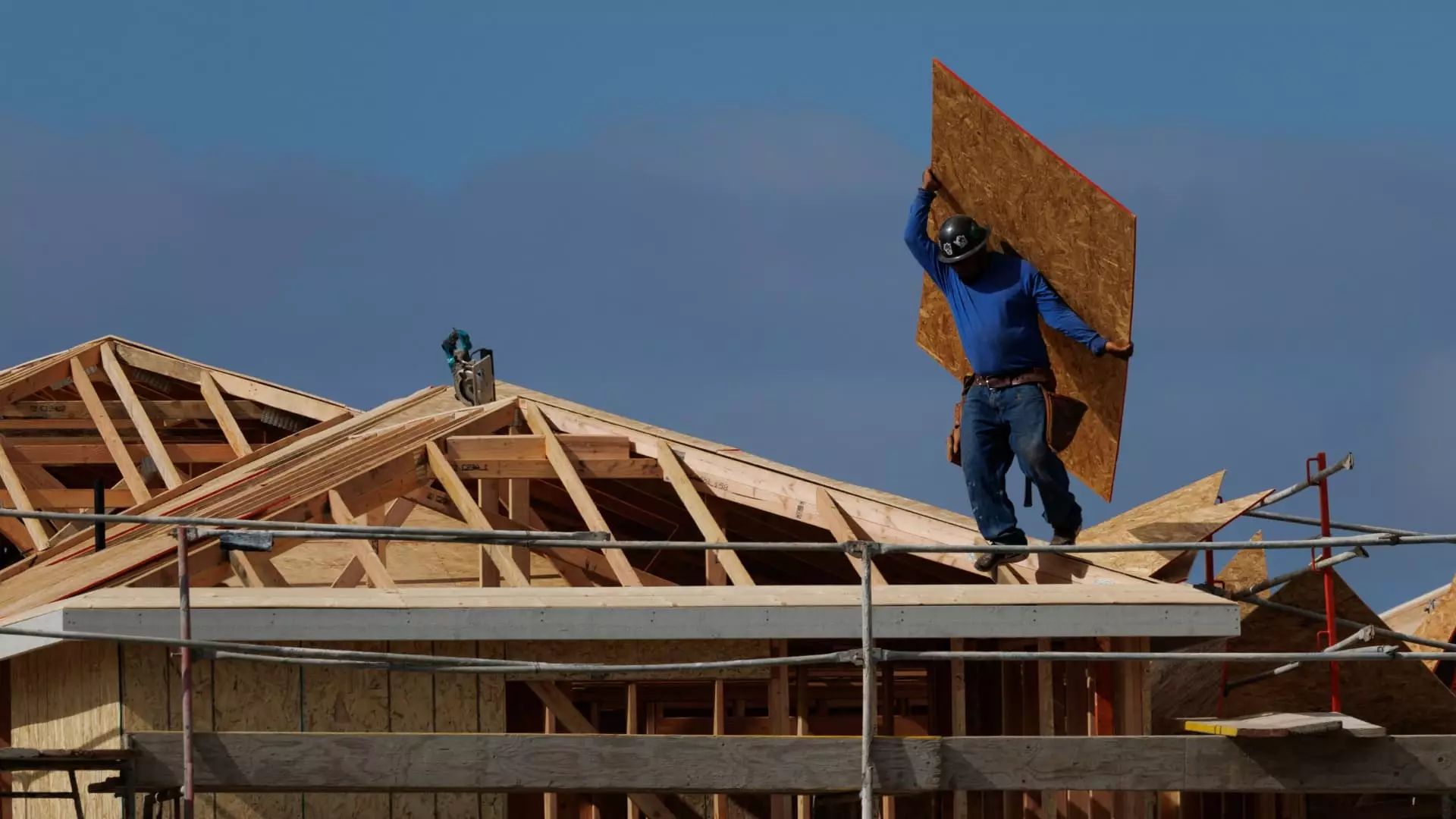Despite recent slight improvements in builder confidence, the housing sector’s foundations remain precariously unstable. Limited gains, driven by marginal legislative relief, mask a deeper malaise rooted in systemic affordability issues and stagnant demand. While a single point increase on the NAHB index might seem encouraging, it’s nothing more than a flicker of hope in a landscape marred by declining buyer traffic and relentless price cuts. The underlying message is unmistakable: the housing market, hampered by economic headwinds, cannot sustain current momentum for long. The false sense of revival risks obscuring the hard truth—homebuilders are desperate, and prospective buyers are increasingly priced out of the market.
An Illusory Bounce Masked by Persistent Challenges
The recent legislative nudges—fiscal measures intended to stimulate economic activity—have temporarily lifted spirits. However, their impact on the housing market appears superficial at best. Mortgage rates linger stubbornly at elevated levels, gnawing at household affordability and deterring homebuyers. The cyclical dance of rate fluctuations and legislative support hasn’t shifted the fundamental landscape: affordability continues to erode, and demand wanes accordingly. Builders, in response, are resorting to aggressive price cuts—an unwelcome but necessary tactic—that threaten their margins and long-term viability. The trend of increasing discounts, with an average of 5% since November, underscores an industry that is increasingly desperate to clear inventory but finds fewer buyers willing to pay the rising costs associated with homeownership.
Price Cuts as a Symptom of Structural Weakness
The record-breaking rate of 38% of builders engaging in price reductions reveals a market gripped by vulnerability. These discounts, while temporary relief for potential buyers, threaten to distort the very fabric of the housing economy. Builders are sacrificing profits—not merely for volume but as a survival mechanism in an environment of declining buyer interest. The strategy of subsidizing mortgage rates, though somewhat effective in enticing marginal buyers, does little to offset the hit to margins. Savvy analysts warn that further reliance on outright price reductions could exacerbate the problem, leading to unsustainable financial strain on builders and potential ripple effects throughout the housing industry. This aggressive discounting signals a crisis of confidence, where the opportunity cost of lower margins outweighs the short-term gains—a dangerous game that could precipitate longer-term instability.
The Broader Economic Context and Future Outlook
While some components of the builder confidence index show marginal growth—current sales conditions and future sales expectations—the overall picture remains bleak. Most telling is the dramatic plunge in buyer traffic, which hit its lowest point since late 2022. This decline is not isolated but indicative of a deeper economic disconnect: affordability is at a multi-year low, and prospective homebuyers are increasingly priced out or hesitant to commit amidst economic uncertainty. Regional disparities further accentuate this fragility, with the South and West showing the greatest strain. Economic forecasts predict a continued decline in single-family housing starts and permits in 2025, confirming that the sector’s current struggles are unlikely to resolve anytime soon. The housing market appears to be caught in a vicious cycle—declining demand leads to price cuts, which in turn erode profitability and confidence, further suppressing demand.
Why Center-Left Liberal Solutions Are Essential for a Resilient Housing Future
Amidst this turmoil, the response must be nuanced and centered on sustainable solutions rather than short-term fixes. Policymakers and industry leaders should recognize that affordability isn’t just a matter of temporary relief but requires structural reform. Investments in affordable housing, targeted tax incentives, and policies that address the root causes of rising housing costs could foster a healthier market. Such measures would serve not only to stabilize builder confidence but also to ensure that homeownership remains within reach for a broader demographic, fostering long-term economic resilience. Over-reliance on subsidies like rate buydowns or price reductions creates a band-aid approach that ultimately jeopardizes the sector’s stability. Instead, fostering a balanced strategy—one that emphasizes affordability, sustainable growth, and equitable access—is essential for transforming the housing market from a fragile bubble into a resilient backbone of economic stability.

